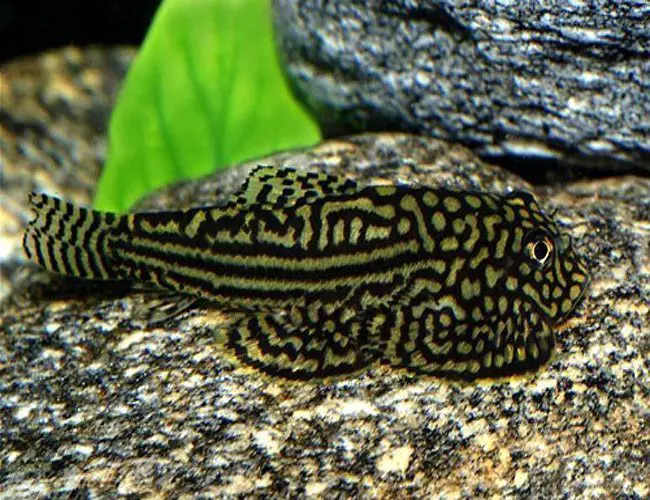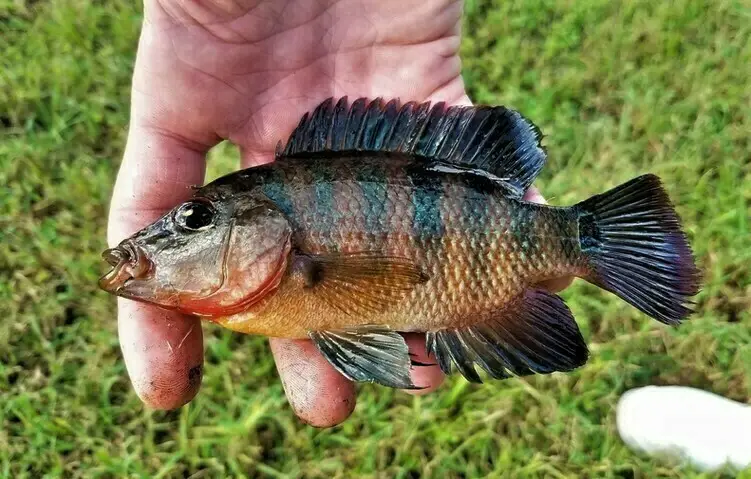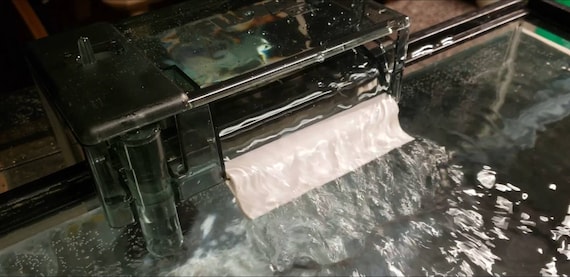What to Feed Clownfish?
Clownfish are omnivores so it is important to provide them with a diet that contains both animal and plant matter. A good option for their staple diet is flake or pellet food specifically designed for clownfish. These foods contain the correct balance of proteins, fats, and carbohydrates needed by the fish.
In addition to this, you can supplement their diet with frozen or live brine shrimp, mysis shrimp, bloodworms, chopped up clams and other seafoods as well as vegetable-based food like seaweed sheets or blanched vegetables such as spinach or zucchini. It’s also important to vary their diet periodically in order to ensure they receive all of the vitamins and minerals they need for optimal health. Feed your clownfish small amounts twice a day if possible; once in the morning and once at night.
Clownfish are known for their bright colors and fun personalities, but it’s also important to make sure they’re getting the proper nutrition. When it comes to what to feed clownfish, a varied diet of both frozen and live foods is ideal. Frozen foods such as mysis shrimp, krill, plankton, bloodworms, brine shrimp and other prepared food items provide a great nutritional balance while live foods like copepods or amphipods can add variety and enrichment.
Supplementing with high-quality marine flakes or pellets will help ensure that all of your fish’s dietary needs are met.

Credit: www.fantaseaaquariums.com
How Often Should I Feed My Clownfish?
When it comes to feeding your clownfish, a regular and consistent feeding schedule is key. Generally speaking, it’s recommended that you feed your clownfish twice per day – once in the morning and once in the evening. When creating your feeding schedule, be sure to make note of how much food they are eating at each meal so you don’t overfeed them.
Overfeeding can cause health problems for your fish as well as lead to an increase in algae growth due to increased nutrient levels from uneaten food particles. For each meal, start by offering a small pinch of food – about the size of their eyeball – and if it takes less than fifteen seconds for them to consume all of it then offer another very small pinch until they stop eating after two or three pinches total. This will ensure that they get enough while also avoiding any issues with overfeeding which could have serious negative consequences on their health and wellbeing in the long run.
What Do You Feed New Clownfish?
When introducing a new clownfish to your aquarium, it is important to provide them with the right nutrition. The best foods for clownfish are high-quality flakes and pellets that are made specifically for marine fish. These should be supplemented with live or frozen foods like brine shrimp, plankton, mysis shrimp, and other sources of protein.
It’s important to vary their diet as much as possible so they get all the essential vitamins and minerals they need. You can also feed blanched vegetables such as spinach or zucchini occasionally; this will help keep them healthy while adding variety to their diet. Feeding twice daily in small amounts is ideal for clownfish; overfeeding can lead to health issues down the road so it’s important not to give too much food at one time.
With a good variety of quality foods and proper feeding habits, you can ensure your new clownfish gets all the nutrients it needs!
What Do Clownfish Eat in Captivity?
Clownfish are a popular choice for home aquariums, and they can be easy to care for if their dietary needs are met. In captivity, clownfish should primarily eat meaty marine foods such as frozen mysis shrimp, brine shrimp, clam and mussel flesh, chopped krill or squid and finely chopped fish fillets. They may also accept small pellets or flakes designed specifically for carnivorous saltwater fish like clownfish.
Vegetable matter is not a major part of the diet of wild clownfish, so it does not need to be offered with much frequency in captivity. However some hobbyists do offer occasional algae-based treats such as spirulina flake which helps keep them healthy. Live blackworms are also appreciated by many clownfish species but should only be used occasionally due to the risk of introducing parasites into the tank.
Whatever type of food is offered to your clownfish make sure you provide variety; this will help prevent malnutrition as well as boredom from your pet eating the same thing every day!
How Do I Make My Clownfish Happy?
Making your clownfish happy is a great way to ensure they stay healthy and live a long, prosperous life. One of the most important things you can do to make sure your clownfish is content is to provide them with an appropriately sized tank. It should be at least 20 gallons for one fish and about 10 additional gallons for each additional fish.
Additionally, make sure the water temperature remains between 74-78 degrees Fahrenheit and don’t forget to use a quality filtration system as well! Clownfish also enjoy having plenty of hiding spots in their environment like caves or rocks that they can swim around; these will help them feel safe and secure when swimming around the aquarium. You should also feed them high-quality food specifically designed for clownfishes such as flakes, pellets, frozen foods or even live brine shrimp on occasion!
Lastly, it’s essential that you monitor their health regularly by performing regular water tests so if there are any changes in pH levels or ammonia levels you’ll be able to detect it quickly before it becomes harmful to your pet’s wellbeing. By following all these tips, you’re sure to have a happy and healthy clownfish who loves spending time in its home!
The Ultimate Guide to Clownfish Feeding – Everything You Need to Know!
How Often to Feed Clownfish
Clownfish should be fed once or twice a day, with no more than they can consume within two minutes. It is important to provide a variety of foods, such as flakes or pellets, frozen and freeze-dried items like brine shrimp and mysis shrimp. Feeding them too much will cause an increase in ammonia levels in the tank which can be harmful to the fish.
Can Clownfish Eat Bloodworms
Clownfish are omnivorous, meaning they eat both plant and animal matter. Bloodworms can make a nutritious snack for clownfish as part of a varied diet. Always freeze bloodworms before feeding them to your clownfish as this will eliminate any parasites or bacteria that may be present in the worms.
Additionally, it is best to feed your clownfish only what they can consume within several minutes to avoid overfeeding.
What Do Clownfish Eat in the Wild
In the wild, clownfish are omnivorous and will consume a wide variety of foods such as plankton, shrimp, algae, worms and small crustaceans. They also occasionally graze on soft corals for their nutritional benefits. To meet their dietary requirements they tend to hunt in groups which helps them to catch more food than an individual would be able to capture alone.
What Do Female Clownfish Eat
Female clownfish are omnivorous and typically feed on algae, small crustaceans, worms, zooplankton and sometimes even detritus. In addition to these food sources, they may also eat the eggs of other fish species or occasionally scavenge dead fish. Since they live in a coral reef environment that is rich in nutrients, female clownfish have access to an abundant diversity of food choices.
What Eats Clownfish
Clownfish are usually preyed upon by larger fish such as grouper, snapper, moray eels and sharks. Other creatures they must watch out for include sea anemones, starfish, crab and octopus. Clownfish have adapted to their environment by forming a symbiotic relationship with certain species of anemone which makes them less vulnerable to predators due to the stinging tentacles of the anemone providing protection.
What to Feed Small Clownfish
Small clownfish, also known as “nemo”, are omnivores and require a diet of both meaty foods and plant matter. On the meaty side, they can be fed frozen mysis shrimp, copepods or other small invertebrates such as freeze-dried brine shrimp. For their vegetable needs, you can feed them blanched vegetables like zucchini, spinach and peas.
It is important to ensure that food items are appropriately sized for your clownfish’s mouth size for easy consumption and digestion.
Clownfish Eat Their Own Eggs
Clownfish are known for their fascinating behavior when it comes to raising their young. In some cases, clownfish will actually eat their own eggs if they feel that the environment is too stressful or overcrowded. This is a way for them to ensure the survival of their remaining fry, as well as maintaining balance in the ecosystem.
It’s an interesting adaptation that shows just how resilient these animals can be!
Conclusion
In conclusion, feeding clownfish is an important part of their health and wellbeing. A varied diet of fresh or frozen mysis shrimp, brine shrimp, spirulina flakes, and other prepared fish food will ensure that your clownfish are getting all the nutrients they need to stay healthy. To make sure your clownfish receive all the nutrition they require, it’s also important to provide them with a clean environment free from pollutants.
With some careful planning and dedication to good aquarium maintenance practices, you can help keep your clownfish happy and healthy for years to come!






